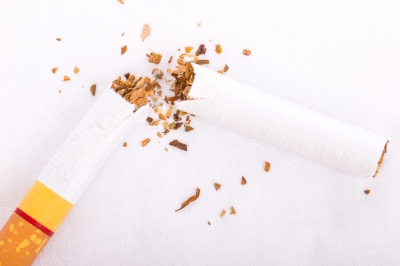
No doubt you already know the dangers of first-hand smoke, both for yourself as well as your yet-to-be-conceived child. Smoking has been linked to infertility challenges, higher-rates of miscarriage and premature and underweight babies. This doesn’t even begin to delve into the effects it has on a baby’s physical well-being. Equally harmful are the effects of second- and third-hand smoke. If you are trying to get pregnant, or have just become pregnant, make sure to protect yourself and your baby from the risks of both second- and third-hand smoke.
Just to clarify: first-hand smoke means you are the smoker, second-hand smoke means you are in physical proximity of smoke exhaled by a smoker, and third-hand smoke is the lingering contaminants from cigarette smoke that remains in a room, an elevator, a person’s clothing, etc. even after the smoke is no longer present. The effects of third-hand smoke can last for days after a cigarette is extinguished.
5 Dangers of Second- and Third-hand Smoke
- Lower fertility rates. The reality is that inhaling second-hand smoke is associated with the same risk levels as smoking yourself. After all, you are directly inhaling the same smoke the smoker inhaled into his or her own lungs. A study of nearly 5000 women who had never smoked found that 68 percent of the women who exposed to second-hand smoke for six or more hours per day had a much harder time getting pregnant and/or suffered from higher miscarriage rates than women who had lower smoke exposure. Unfortunately, this included women who had been exposed to second-hand smoke as a child.
- Trouble with IVF implantation. Sadly, living with a smoker can greatly reduce your chances of having successful in-vitro fertilization (IVF) or intracytoplasmic sperm injection (ICSI) implantation. A recent study of 225 women revealed the following statistics:
–48% of the non-smoking women had implantation success
–19% of women who smoked became pregnant
–20% of the women who lived with smokers experienced successful IVF implantation
In other words, living with a smoker is only slightly better for you than smoking yourself. - Third-hand smoke affects fetal lung development. Because third-hand smoke contains the same toxins as first- and second-hand smoke, it is responsible for the same physiological damage as first-hand smoke. If you are pregnant, and you spend time in homes or cars where third-hand smoke is prominent, the toxins can hinder healthy fetal lung development.
- Elevated risk for asthma. Under-developed lungs are especially vulnerable to respiratory problems, most notably asthma. Asthma is a serious and usually chronic condition, and your baby is more susceptible to developing asthma if he or she is exposed to both first-, second- and third-hand smoke.
- Babies are twice as susceptible to breathing third-hand smoke. Because babies spend so much time crawling, laying on household furnishings, and are generally lower to the ground, they are significantly more susceptible to ingesting dust, which is laden with the heavy contaminants contained in third-hand smoke. According to researchers who published the findings from their third-hand smoke research in the American Journal of Physiology, “nicotine levels are six times lower among infants living in homes with strict no-smoking policies.”
If you, your spouse, or your family members smoke, be insistent that they quit. Talk to your healthcare provider about smoking cessation programs. If they are unwilling to give up the habit, they should always smoke outside, in fresh air, while wearing a designated “smoking jacket” or over-shirt. Smokers should ideally wash their hands and face, and brush their teeth before handling the baby.
For more information about steps you can take to increase your chances of fertility, and protect the health of your baby, contact the fertility specialists at the Reproductive Resource Center.
 Patient Portal
Patient Portal
